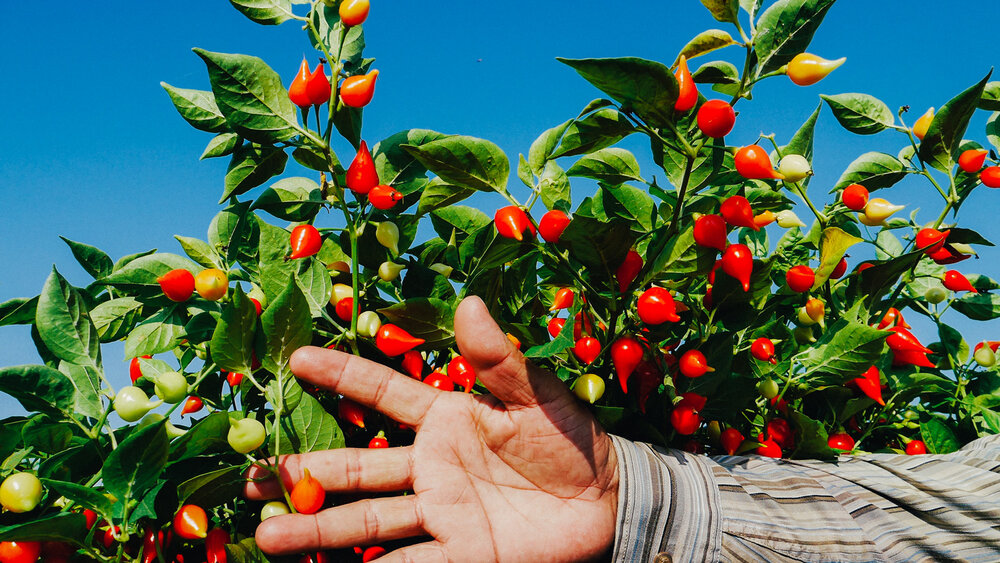- No. 268 Xianghe Street, Economic Development Zone of Xingtai city, Hebei 054001 China
- Byron@hbhongri.cn
fermenting dried chili peppers
Fermenting Dried Chili Peppers A Flavorful Journey
Fermenting dried chili peppers is an ancient practice that not only enhances the flavor of the peppers but also promotes the development of beneficial probiotics. This unique process transforms simple dried peppers into complex, tangy, and spicy ingredients that can elevate a variety of dishes. In this article, we will explore the art of fermenting dried chili peppers, the benefits of fermentation, and how to incorporate these delicious fermented peppers into your culinary repertoire.
The Basics of Fermentation
Fermentation is a natural process that involves the conversion of sugars into acids, gases, or alcohol by microorganisms such as bacteria and yeast. In the case of chili peppers, the fermentation process typically involves lactic acid bacteria, which thrive in anaerobic (low-oxygen) environments. During this process, the natural sugars present in the peppers are broken down, resulting in the production of lactic acid. This not only preserves the peppers but also adds a distinct tangy flavor.
Choosing the Right Peppers
When it comes to fermenting dried chili peppers, the first step is selecting the right variety. Different types of chili peppers offer unique flavors and heat levels. Common choices for fermentation include
1. Ancho Peppers These dried poblano peppers provide a mild heat and sweet, fruity flavor. 2. Guajillo Peppers With a deep, berry-like flavor and moderate heat, guajillo peppers are excellent for fermentation. 3. Cascabel Peppers Known for their earthy and smoky taste, cascabels add depth to fermented chili blends. 4. Chipotle Peppers These smoked jalapeños bring a robust, smoky flavor to the mix, making them a popular choice.
The Fermentation Process
Fermenting dried chili peppers is a straightforward process that can be done at home with minimal equipment
. Here’s a simple method to get you startedIngredients - Dried chili peppers (your choice) - Water (filtered or distilled) - Salt (non-iodized, such as sea salt or kosher salt)
Instructions 1. Prepare the Peppers Begin by rinsing the dried chili peppers in cool water. Remove any stems and seeds if desired, but keep in mind that the seeds can add extra heat.
fermenting dried chili peppers

2. Make the Brine For every cup of water, add 1-2 tablespoons of salt, stirring until dissolved. This brine will create the right environment for fermentation while preventing the growth of undesirable bacteria.
3. Submerge the Peppers Place the prepared chili peppers in a clean glass jar or fermentation vessel. Pour the brine over the peppers, ensuring they are fully submerged. If necessary, use a weight or a small jar filled with water to keep the peppers submerged.
4. Seal and Ferment Seal the jar with a lid or cover it with a cloth secured with a rubber band to allow gases to escape. Place the jar in a cool, dark location, ideally between 60-75°F (15-24°C). Allow the peppers to ferment for 1 to 4 weeks, tasting periodically to achieve your desired flavor.
5. Storage Once fermented to your liking, the peppers can be stored in the refrigerator for several months. The cold temperature will slow down the fermentation process, preserving their tangy flavor.
Culinary Uses
Fermented dried chili peppers can be used in various ways to enhance your dishes
- Salsas and Sauces Blend the fermented peppers with tomatoes, onions, and other ingredients to create a tangy salsa or sauce that packs a punch. - Soups and Stews Add chopped fermented peppers to soups and stews for an extra layer of flavor and heat. - Condiments Use fermented chili peppers as a topping for tacos, sandwiches, or grilled meats to add depth and spice.
Health Benefits
Fermented foods are known for their health benefits, primarily due to their probiotic content. Fermented dried chili peppers can contribute to better digestion, boost your immune system, and even enhance nutrient absorption. The presence of lactic acid bacteria supports gut health and can improve overall well-being.
Conclusion
Fermenting dried chili peppers is a rewarding culinary endeavor that transforms humble ingredients into flavorful and nutritious additions to your kitchen. With just a few simple steps, you can create delicious fermented peppers that not only tantalize your taste buds but also promote better health. So, gather your dried chili peppers, embrace the magic of fermentation, and embark on a flavorful journey that will elevate your cooking to new heights.
-
Turmeric Rhizome Powder: A Golden Treasure from Roots to TableNewsJul.28,2025
-
The Versatile Application Of Crushed Red Hot Peppers: Lighting Up The Red Flames On The Dining TableNewsJul.28,2025
-
The Paprika: A Touch Of Vibrant Red In Color, Flavor, And CultureNewsJul.28,2025
-
Ground Turmeric: A Modern Examination of an Ancient SpiceNewsJul.28,2025
-
Capsicum Liquid Extract: Features, Applications, and ChallengesNewsJul.28,2025
-
Application of Capsicum Liquid Extract in FoodNewsJul.28,2025







